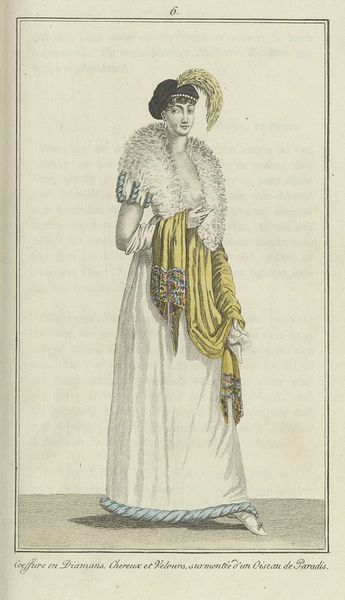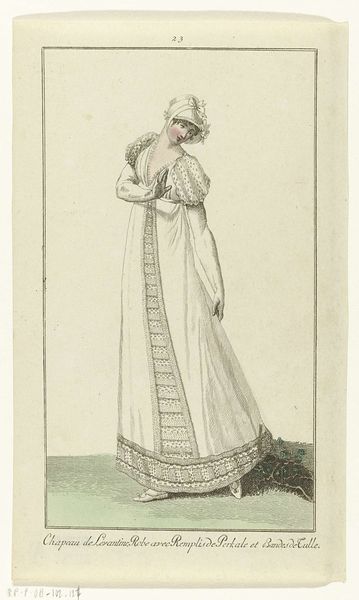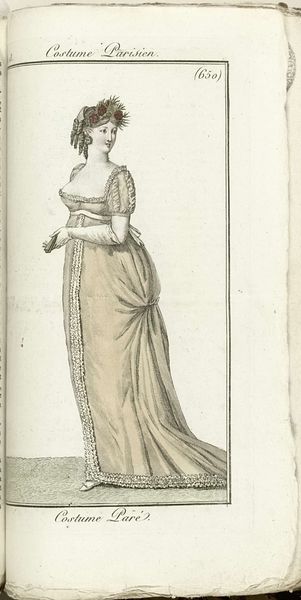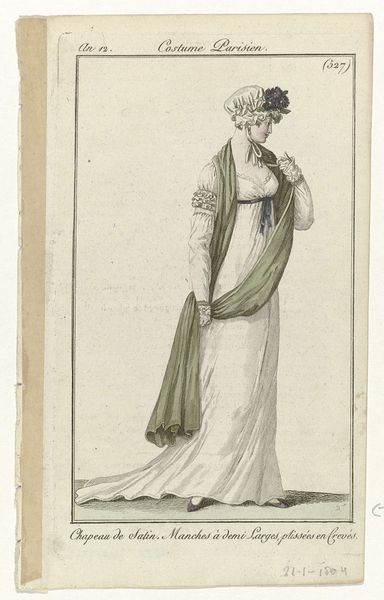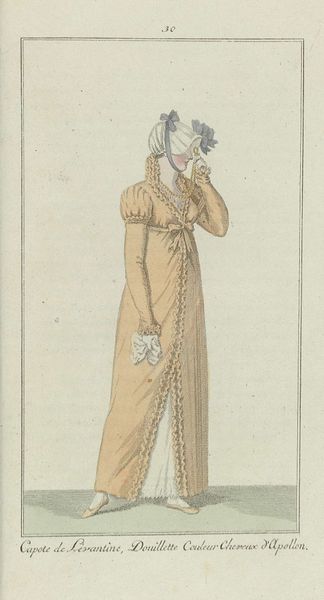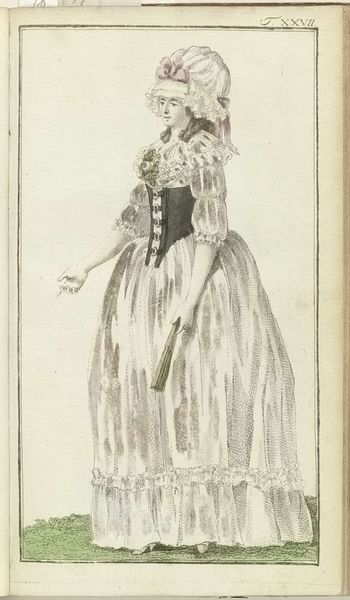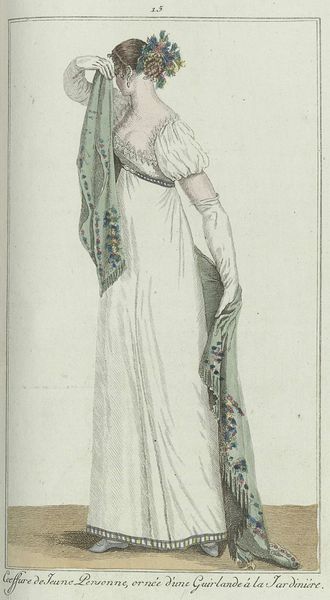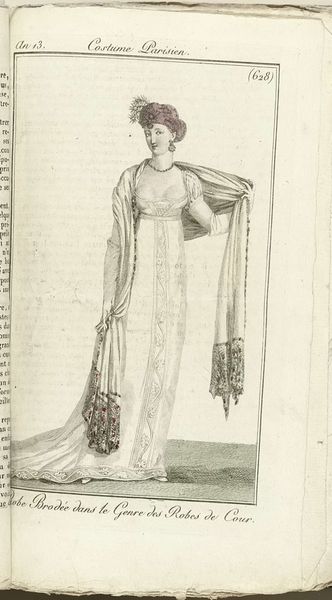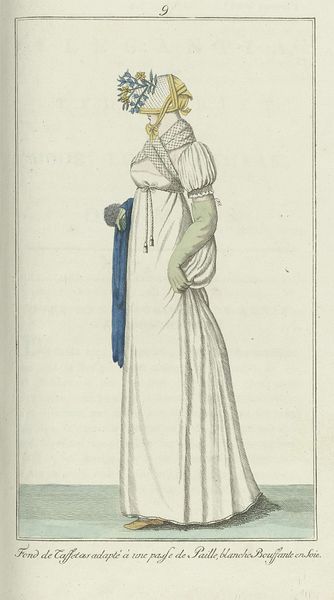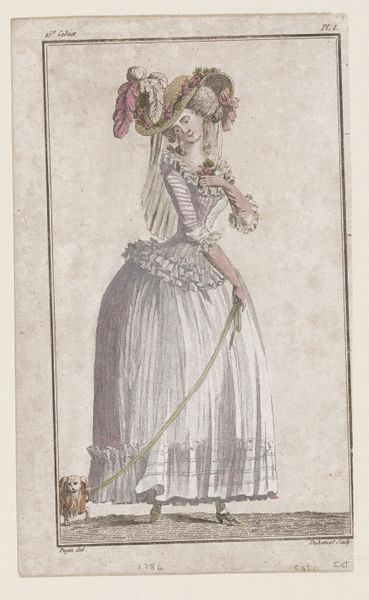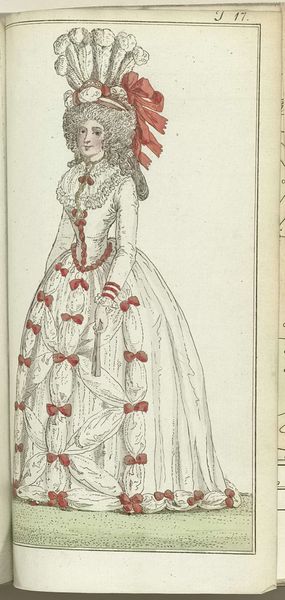
Elegantia, of tijdschrift van mode, luxe en smaak voor dames, Februari 1807, No. 5 : Coeffure et Robe Parées... 1807
0:00
0:00
anonymous
Rijksmuseum
print, engraving
#
portrait
#
neoclacissism
# print
#
engraving
Dimensions: height 168 mm, width 104 mm
Copyright: Rijks Museum: Open Domain
Curator: It looks like an advertisement or fashion plate; is this from the 19th century? It seems focused on displaying a single, ideal female figure. Editor: Indeed. What we are looking at is an engraving dating back to February 1807. It’s titled, “Elegantia, of tijdschrift van mode, luxe en smaak voor dames, Februari 1807, No. 5 : Coeffure et Robe Parées…” The piece is currently held in the collection of the Rijksmuseum. Curator: The fine, detailed lines create a sense of delicate luxury. One can tell they used high quality inks and paper. Was this a commercially produced image, designed for a specific market or consumer group? Editor: Certainly. Fashion plates such as these disseminated French fashion trends throughout Europe. They served a dual role, promoting specific textiles, trims, and dressmakers while reinforcing social hierarchies and expectations surrounding female appearance. The material suggests that printed ephemera contributed significantly to constructions of gender roles. Curator: Thinking about materials, I am struck by what that feathered trim around her neck might have been made from, and the cost. How widely available could swan feathers like those have been? And consider the labor involved in sourcing and attaching such embellishments to a garment. These kinds of fashion items were obviously intended for a certain tier of the population that can participate in that cycle of consumerism and artistry. Editor: Precisely, the very magazine title declares the work’s relationship to “mode, luxe en smaak,” underscoring its intended audience. And what’s fascinating, in the socio-historical context, is how prints such as this played a part in constructing an image of ideal womanhood during the Napoleonic era. The imagery evokes notions of elegance and sophistication, carefully curating aristocratic taste at a pivotal historical moment. Curator: I see this plate also as a testament to the labor and skill invested in its production. Every line speaks to a deliberate decision. Even the coloring, subdued as it is, seems meticulously applied to emphasize specific textures and fabrics. I wonder who exactly was crafting these plates, their place in society, and their level of artistic agency in that work. Editor: Those are key points. By displaying it, our museum affirms the historical relevance of this image and acknowledges its entanglement within socio-cultural forces that shaped identity and taste during its time. Curator: Ultimately, analyzing its material production processes allows for more layered insight into the art. Editor: Yes, understanding the print’s social role underscores art’s enduring impact.
Comments
No comments
Be the first to comment and join the conversation on the ultimate creative platform.



